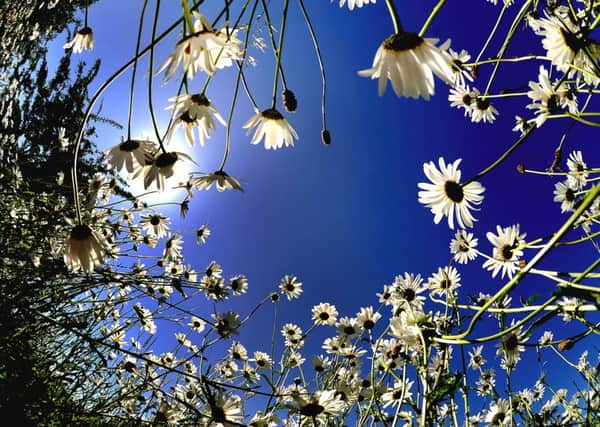Picture Post: Why daisy chains are vital to future of insects


Changes to farming practices over the decades has meant many natural corridors which creatures like bees used to navigate have disappeared and that is having a big impact on wildlife populations.
Research shows that one in three mouthfuls of food we consume requires an insect pollinator. However, if bees aren’t able to move round, large numbers of crops won’t be pollinated and it won’t be too long before the world’s ecosystem grinds to a halt.
Advertisement
Hide AdAdvertisement
Hide AdIn wake of the stark statistics, which also show that 97 per cent of the UK’s meadows have disappeared, a number of projects have been launched in Yorkshire to reverse the trend. The Yorkshire Dales Millennium Trust began its Hay Time project back in 2006 to restore botanical diversity to 50 hectares of meadows across the Forest of Bowland.
Initially running for five years, such was the success of the project it gained funding for a further three years and through a new appeal the restoration and protection of the meadows continues today.
“Visually stunning and teeming with wildlife, species-rich hay meadows are of high nature conservation and landscape value,” said a spokesman for the Hay Time project. “A traditionally managed meadow can support up to 120 different species of wildflowers and other plants, as well as many species of invertebrates, bats, mammals and birds.
“Hay meadows are a vital habitat for bees but many species of bumblebee are in decline and some have already become extinct. On a still sunny July day, they are alive with colour and scent, the sounds of buzzing insects and bird song. Later, when the seeds have set, the meadows fill with the sound of tractors and mowers and balers and people, working together to ensure the hay is collected before the rain comes.
Tech details: Nikon D3’s, Lens Nikon 10.5mm fisheye, SB900 Speedlight Flash, Shutter Speed 1/320s, Aperture f/10, ISO 1EV under 200.